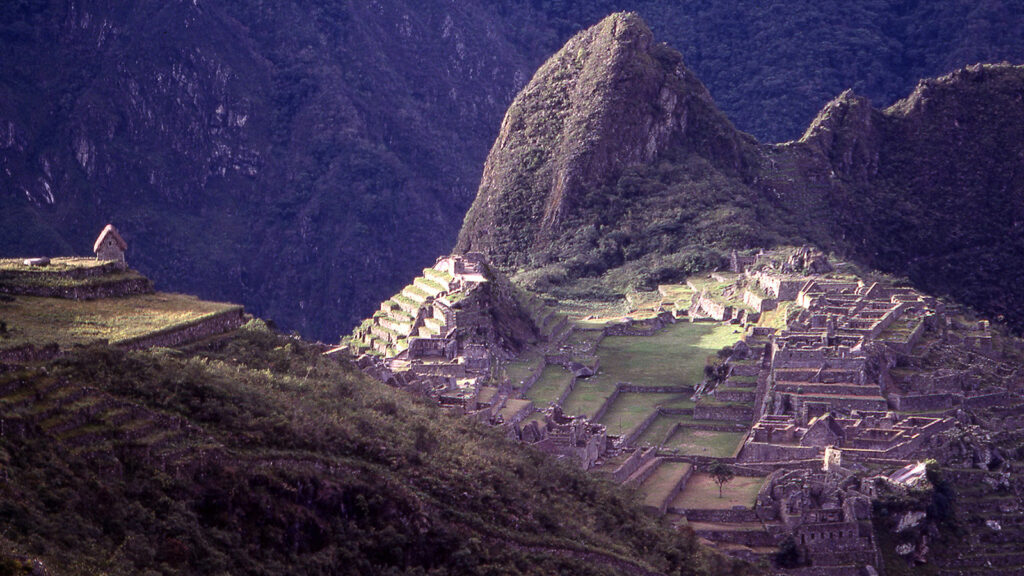Machu Picchu, the jewel of Inca architecture, which with its walls, terraces and water channels seems to have been cut into the mountain, has become a symbol of a symbiosis between nature and civilisation. Between 1971 and 1973, and several times after that, I stayed in the Andes region of South America. Again and again I visited the Inca ruins, which fascinated me in their strangeness. Since I was also involved in researching processes on material surfaces, I wanted to understand how the Inca masons were able to work the mostly volcanic stones and join them together so masterfully . The first reporters of the Inca culture told of a reddish glittering mud, in the Quechua language “llancac alpa”, which was used to make the walls.
Scholars considered these stories folklore, but I made an effort to follow their traces. The search for answers drove me to even the most remote Inca settlements, like Incallajta in the Cochabamba region of Bolivia. I remember marching alone for many hours to this then completely abandoned place. Wrapped in my poncho, I spent the night in the ruins, but slept badly as I watched snakes hunting in the moonlight several times. All in all, my curiosity about the Inca walls paid off, even though I only published my answer a few years ago (Ref. 444). It was the very acidic pyrite slurry from the mines that had been used to dissolve, restructure and embellish stone surfaces. By heating this pyrite slurry between blocks of stone, it was possible to produce additional aggressive hot sulphuric acid.


 Deutsch
Deutsch Italiano
Italiano